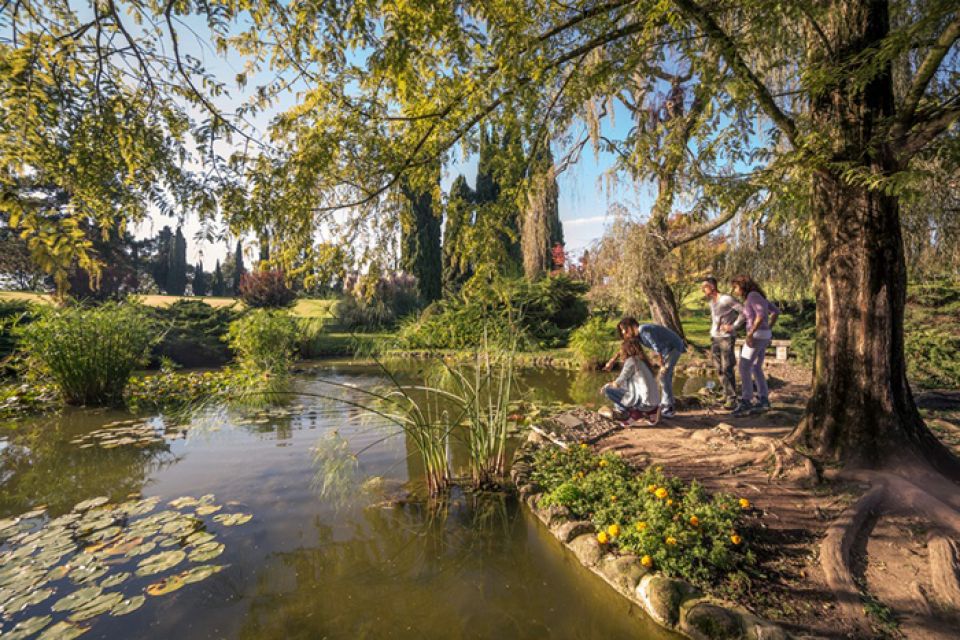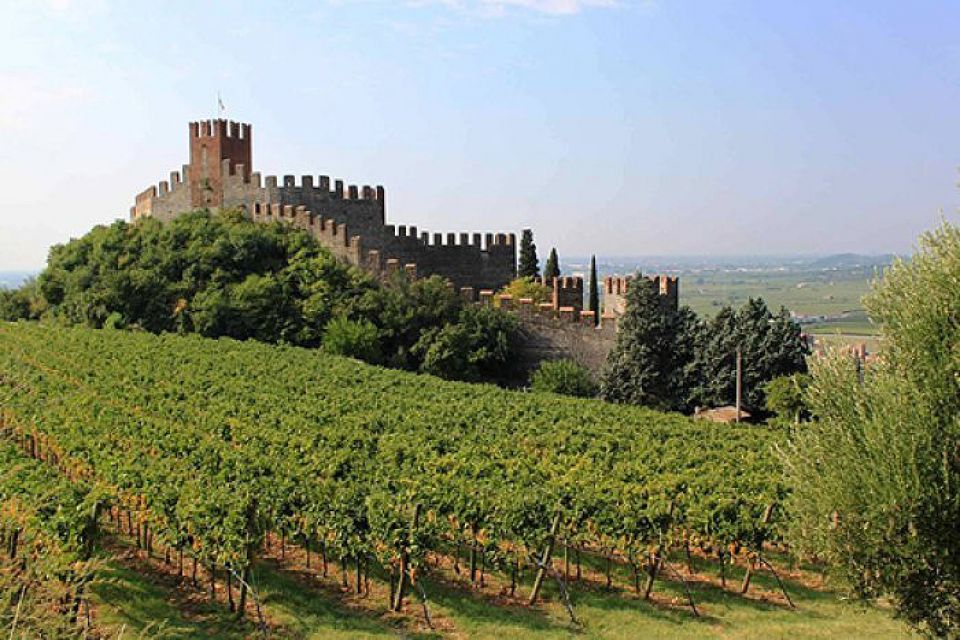Parchi e Svago
L’Agriturismo Dal Checco, situato nella frazione di Verona chiamata Chievo, a pochissimi chilometri dal centro città offre numerose opportunità di svago e di attività sportive che potranno occupare il vostro tempo libero a Verona.
PARCO SIGURTÀ
LA FAMIGLIA SIGURTÀ
Incantevole complesso ecologico nato nel 1407. Subisce varie migliorie nell’arco dei secoli fino ad arrivare ai giorni nostri:
Nel 1990 viene realizzata la Meridiana Orizzontale, progettata per avere una validità di 26.000 anni. Nel 2011, dopo sei anni di costruzioni, è stato inaugurato il Labirinto, un percorso che si snoda su una superficie di 2500 metri quadrati e che accoglie 1500 esemplari di piante di Tasso.
In questi anni inoltre è stata fatta una approfondita ricerca sulla fioritura dei tulipani che colora il parco nel mese di aprile, ad oggi, con il suo milione di bulbi, è considerata la più importante del Sud Europa.
L'amore della famiglia Sigurtà nei confronti del Parco ha permesso di raggiungere risultati importanti, come i recenti riconoscimenti di "Parco Più Bello d'Italia 2013" e di "Secondo Parco Più Bello d'Europa 2015".
Ogni anno, da marzo a novembre, centinaia di migliaia di visitatori di diverse nazionalità visitano il Parco.
PARCO NATURA VIVA
Il Parco Natura Viva un moderno Parco Zoologico.
Nasce grazie all’architetto Alberto Avesani, il fondatore, che trasformò negli anni '60 parte della propria azienda agricola, esistente dal 1933, in un'area faunistica, raccogliendo animali della fauna locale per allevarli ed eventualmente mostrarli al pubblico.
Nacque poi l'occasione di accogliere temporaneamente anche gli animali di un circo e da qui il pensiero di creare un parco, aperto al pubblico, per ospitare animali sia esotici che autoctoni.
Il primo settore di circa 10 ettari, attuale percorso Faunistico, viene inaugurato nel 1969.
Nel 1973 si aggiunse un settore dedicato alle specie di mammiferi ed uccelli africani denominato Safari, da visitare a bordo del proprio autoveicolo.
Nel 1978 viene ampliata con nuovi percorsi: l'Aquaterrarium, la Serra Tropicale e l'area Dinosauri, dove i visitatori, per la prima volta in Italia, poterono ammirare modelli a grandezza naturale dei rettili del passato.
Dal 1985 si è avviato un importante progetto di riqualificazione generale di tipo zoologico, architettonico e manageriale.
Bicicletta e Jogging?
Nei pressi dell’Agriturismo ci sono lunghe piste ciclabili "del sole (ciclopista del sole)" lungo Adige immerse nel verde e nella campagna circostante.
L’Agriturismo Dal Checco mette a vostra disposizione gratuitamente delle biciclette.
Ci sono lunghi percorsi protetti che portano fino al centro della città.
Per aiutarvi al meglio nell’organizzare le vostre passeggiate, e le vostre pedalate in biciletta lungo le piste ciclabili di Verona consigliamo di consultare il seguente link: ELENCO PISTE CICLABILI
Nelle immediate vicinanze dell’agriturismo, si trovano diversi ristoranti dove poter pranzare e cenare degustando piatti tipici veronesi, come il bollito con la pearà, gli gnocchi, pasta e fasoi, il risotto all’amarone, le frittole, e tante altre specialità.
Shopping?
Dove andare a fare shopping: Centro città, oppure verso il lago di Garda
Centri commerciali:
- “Le porte dell’Adige”
- “La grande Mela”, direzione Peschiera Del Garda,
- "Centro commerciale Adigeo" con più di 130 negozi – zona fiera di Verona.
Alla scoperta di Verona?
Verona offre concerti, mostre artistiche, opere teatrali….Consigliamo di consultare il seguente link:
CITTA' DI VERONA
Cosa visitare a Verona?
- Piazza Brà
- Palazzo della Granguardia
- Arena di Verona teatro di numerosi spettacoli musicali e concerti di artisti di fama internazionale.
- Piazza delle Erbe
- Piazza dei Signori
- Torre Lamberti
- Tombe degli Scaligeri
- Porta Borsari
- Casa di Giulietta
- Porta Borsari
- Castelvecchio e Arco dei Gavi
- Teatro Romano Arsenale Le Torricelle (vista panoramica della città di Verona)
Vie dello shopping di Verona:
- Via Mazzini
- Via Cappello
- Corso Portone Borsari con negozi di Louis Vuitton, Prada, Dolce e Gabbana, Armani, Gucci, Michael Kors…. Zara, H&M e tantissimi altri.
Cliccando sui seguenti titoli, trovate ulteriori informazioni riguardanti i luoghi e i palazzi di Verona citati precedentemente.
Luoghi da vedere a Verona
Verona Guide
Relax, benessere?
Per la cura del corpo e della mente Verona e i suoi dintorni offrono numerosi centri benessere, spa e centri termali.
Terme di Colà – Parco termale del Garda – Villa dei Cedri - Lazise
13 ettari che comprendono laghi ed alberi.
Sorgente termale all’interno del parco: piscina termale e lago termale con temperatura dell’acqua a 33° e aree che raggiungono anche i 37-39°.
Varie zone relax, docce con cromoterapia, haloterapia, saune finlandesi, biosauna, bagno turco con cromo e aromaterapia, doccia abbronzante …
Centro Benessere Termale Aquaria – Terme di Sirmione
3500 mq di superficie coperta.
6500 mq di parco.
700 mq di superficie di acqua termale.
Saune vista lago e vasche idromassaggio.
Piscine, lettini effervescenti, bagni di vapore, docce emozionali con acqua ricca di sali minerali e oligoelementi.
Temperatura sempre tra i 35 e i 36° che consente di utilizzare le piscine esterne anche in inverno.
Aquardens – Terme di Verona
5000 mq di vasche e lagune, grotte e cascate, acqua salso-bromoiodica che sgorga purissima a 47°C da una profondità di 130 metri.
1500 mq di centro wellness con cabine beauty e SPA





